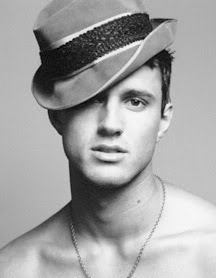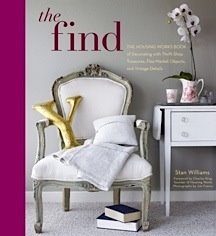Just a few days ago, Karl Lagerfeld unveiled his latest short film, The Return, at a Chanel event in Dallas, Texas. If you weren't there to watch it on the drive-in movie screen, you can catch it here, thanks to YouTube. It's about 25 minutes long, and stars Geraldine Chaplin as Gabrielle "Coco" Chanel––"a real bitch," according to both Chaplin and her director, Mr Lagerfeld. The insouciance of the insular, mid-fifties era in French and American fashion (when declining perfume sales prompted Chanel to reopen her couture house––hence the film's title) is conveyed beautifully by a well-chosen, well-costumed cast. But it's Chaplin herself who commands our attention. Having had little time to prepare for the role, she still manages to express both sides of Chanel's Janus-like personality: tough-as-nails businesswoman on one hand; flirty, feminine schoolgirl on the other. The clothes and accessories are to die for––and Lagerfeld adds another feather to a cap that, at this point, holds enough plumage to choke a bird of paradise. Enjoy!
WELCOME TO FASHION AS A 2ND LANGUAGE: ARE YOU FLUENT?
FA2L is for anyone who cares about beautiful things–clothing, shoes, accessories, home furnishings–and the interconnected tribes of those who make, sell, market and desire them. If something speaks to you, buy it now or hold your peace: there are links in each story, so the item you want is just a click away. I'd like to hear from you, too: please view my profile, use the email button and send me your comments. –MG
Showing posts with label Chanel. Show all posts
Showing posts with label Chanel. Show all posts
Friday, December 13, 2013
Wednesday, January 2, 2013
Seeing Clearly Now–the New Chic of Transparency
Transparency is far more common in fashion than it is in, say, banking (or government), so it's no surprise that recent, 90s-influenced collections include plenty of references to that era's see-through clothes and accessories. Of course, plastic garments have been around since the 1920s (even earlier, counting celluloid collars and rubberized footwear), and made memorable appearances in the 1960s (Courrèges, Mary Quant, etc). But 90s transparency was only glancingly influenced by the Space Age–instead, designers in the last decade of the 20th century were far more obsessed with reclaiming iconic fashion tropes, deconstructing them and issuing new (and decidedly ironic) versions. At times, fashion seemed caught in a revolving door of historical references (70s bell bottoms one season, 50s frocks the next). It was also a period of extremes, with star power at each end of a long continuum: Karl Lagerfeld and his high-baroque extravaganzas chez Chanel versus Jil Sander's (or Helmut Lang's) cool displays of minimalism. (Not to mention the stealthy massing of forces at a Milanese operation formerly known for manufacturing nylon bags and backpacks with inexplicable insider appeal–la Casa di Miuccia Prada.)
But that's all fashion history. What's in store for Spring 2013? We spotted this RED Valentino PVC trench coat while shopping in San Francisco, and immediately fell in love with its jaunty attitude. We feel the same about this leather-piped PVC sandal with a buckled Mary Jane strap, by Manolo Blahnik. Finally, the PVC camellia brooch, by Chanel (of course), is a recent–but not current–rendering of one of the brand's key pieces of iconography. If you can't find it in stores, check ebay. As the 90s proved, no fashion ever dies–it just gets sold at auction.
Wednesday, July 14, 2010
Wonder Years: Yves Saint Laurent Haute Couture


 Last week, the small group of designers who still call themselves couturiers showed their collections in Paris. Some offerings were astonishingly good: Stéphane Rolland's intricately draped mini dresses and long mermaid gowns, Givenchy's vaguely-medieval yet futuristic garments (which could be worn with equal aplomb by 20-something Lady Gaga or 40-something Daphne Guinness) and Karl Lagerfeld's shimmering spill of combustible Chanel, dredged from the depths of his limitless imagination. But two men, at least, were conspicuously absent: Valentino Garavani, who has left the business; and Yves Saint Laurent, who has left the world.
Last week, the small group of designers who still call themselves couturiers showed their collections in Paris. Some offerings were astonishingly good: Stéphane Rolland's intricately draped mini dresses and long mermaid gowns, Givenchy's vaguely-medieval yet futuristic garments (which could be worn with equal aplomb by 20-something Lady Gaga or 40-something Daphne Guinness) and Karl Lagerfeld's shimmering spill of combustible Chanel, dredged from the depths of his limitless imagination. But two men, at least, were conspicuously absent: Valentino Garavani, who has left the business; and Yves Saint Laurent, who has left the world.We wonder–do young fashion initiates roll their eyes at the mention of Yves Saint Laurent? It's possible, especially since his later career involved reworking a small set of elements he'd decided were integral to a chic woman's life. Season after season, he offered simple dresses, navy pea coats, perfect jackets and practical tuxedos. And yet, for all his emphasis on wardrobe staples, he could just as easily shake out his handkerchief and scatter flights of fancy like a flock of parakeets.
One such magical display happened in 1988 and yours truly had, if not a ringside seat, then something in the fourth row orchestra, dead center. The setting was Vogue magazine, B.A. (before Anna), and Irving Penn had photographed the Spring couture. In that era, the images were on large-format film, and the long strips were coiled in a flimsy box. (Penn had been shooting for Vogue more than 40 years–he obsessed about photographic details but didn't sweat the small stuff.) It was my job to cut the strips into manageable lengths–something that had caused me great anxiety at first; imagine cutting into Irving Penn's film!–and spread them on light tables in the art department. Then I'd alert Mr. Liberman, Miss Mirabella and the sittings editor, Polly Mellen. But for 15 minutes, while snipping madly, I had the images all to myself. And I was beyond dazzled.
Yves Saint Laurent had taken inspiration from Braque, and done so in a way that literally allowed Christy Turlington or Katoucha to step inside the artist's collages. A naïf guitar (beautifully sequined and beaded) formed the stomacher of one dress; birds hovered in preposterous places on others; and, in a picture that would become the story's opening spread, above, a shocking pink dove wrapped one wing around the neck of that era's Most Beautiful Girl In the World and clasped the front of her gown in its beak. As for me, I was blinded by the light, and could never look at clothes–any clothes–the same way again.
Wednesday, September 23, 2009
Cuff Love: Verdura and Chanel Made Quite a Pair

 The Sicilian duke Fulco di Verdura ran with a fast crowd in the '20s, so it was only a matter of time before he crossed paths with Gabrielle "Coco" Chanel–a real dynamo whose meteoric rise as a couturière, businesswoman and social climber knew no limit. Chanel originally hired Verdura to design textiles, but she quickly recognized his talent for jewelry and initiated a collaborative partnership that produced some of the most memorable baubles of the 20th century.
The Sicilian duke Fulco di Verdura ran with a fast crowd in the '20s, so it was only a matter of time before he crossed paths with Gabrielle "Coco" Chanel–a real dynamo whose meteoric rise as a couturière, businesswoman and social climber knew no limit. Chanel originally hired Verdura to design textiles, but she quickly recognized his talent for jewelry and initiated a collaborative partnership that produced some of the most memorable baubles of the 20th century.Although Verdura's ambition ultimately propelled him to New York and Hollywood, he's probably best remembered for the Maltese cross cuffs he first made Chanel. (She wore them for decades.) They were further popularized by Diana Vreeland, who was so partial to various Verdura pieces one wonders if she ever took them off. Whether gossiping with Halston at Studio 54 or terrorizing underlings at the Costume Institute, she was often photographed wearing the duke's jewelry like fashionable versions of military decorations.
In 2007, the house of Verdura (overseen by CEO Ward Landrigan and his son and president, Nico) acquired Chanel's original cuffs; this year, they took advantage of the company's 70th anniversary to offer limited-edition reissues made of enameled gold set with sapphires, rubies and emeralds. They're not inexpensive, but their beauty and iconic status make them signature items any chic, no-nonsense woman would reach for every day. Average the cost-per-wear over a lifetime, and they're practically free. You do the math.
Photographs courtesy of Verdura; portrait of Chanel by Man Ray, 1935
Sunday, April 19, 2009
Changing Hearts, Minds and Clothes: Coco Chanel
 On April 22nd, Anne Fontaine's film Coco Avant Chanel, starring Audrey Tautou, opened in France. US audiences will see it later this year, along with Jan Kounen's Coco Chanel & Igor Stravinsky with Anna Mouglalis. Since Tautou and Mouglalis are essentially members of the extended Chanel family (representing fragrances No. 5 and Allure) both projects had the company's blessing, not to mention access to current designer-in-residence, Karl Lagerfeld. A third version of the story, by director Danielle Thompson, is also in production. Nearly 40 years after her death--and more than a hundred years since her birth, in 1883--Gabrielle "Coco" Chanel continues to fascinate. She was the right woman in the right place at the right time.
On April 22nd, Anne Fontaine's film Coco Avant Chanel, starring Audrey Tautou, opened in France. US audiences will see it later this year, along with Jan Kounen's Coco Chanel & Igor Stravinsky with Anna Mouglalis. Since Tautou and Mouglalis are essentially members of the extended Chanel family (representing fragrances No. 5 and Allure) both projects had the company's blessing, not to mention access to current designer-in-residence, Karl Lagerfeld. A third version of the story, by director Danielle Thompson, is also in production. Nearly 40 years after her death--and more than a hundred years since her birth, in 1883--Gabrielle "Coco" Chanel continues to fascinate. She was the right woman in the right place at the right time.She probably didn't feel that way as a child of the Auvergne, in central France. Her tubercular mother died before Gabrielle was 12; her father dumped her at an orphanage, never to be seen again; and the girl struggled to earn a living and pick up some schooling while working as a seamstress, a school maid, and, briefly, as a cabaret performer. Chanel must have had great strength of will: by all accounts, the charming, if idiosyncratic, young woman who emerged from this painful childhood already showed signs of the talent, ambition and almost haughty self-confidence that would make her famous. Then she discovered men--and their clothes--and her education really began.
Chanel was pretty, but she didn't have the funds, or figure, for the Belle Epoque's heavily-corseted fashions. Menswear was a revelation, and may well have been the key that unlocked her innovative talent. To paraphrase an old peasant expression (often attributed to Picasso), Beggars borrow, but geniuses steal--and Chanel stole like a magpie from the wardrobes of successive boyfriends. First out of the gate was the horse-mad Étienne Balsan, who introduced her to the beau monde and indulged her taste for hacking jackets and jodhpurs. The polo player Arthur "Boy" Capel loaned Chanel money to start an atelier and open her first stores, in Paris and Deauville; he introduced her to bespoke tailoring; and his closet provided jersey sweaters, which she scissored from neck to hem, finished with ribbon and wore with such aplomb she sold dozens. Chanel had a "Russian period," including affairs with Igor Stravinsky and Grand Duke Dimitri Pavlovich (who lavished her with sable coats and heavy gold chains) followed by an "English period" spent with the dashing, sports-loving Duke of Westminster. Massively rich, he enfolded Chanel in a heady lifestyle combining British practicality and worldly luxury. By the mid-twenties, she was already a celebrated couture designer with a well-honed eye, always seeking inspiration: she copied the navy blazers, brass buttons and striped tops of Westminster's yachting crew; she lifted traditional argyle and fair isle patterns from his country wardrobe; and, from the man himself, she snagged things like his polo coat, which she belted around her small frame and wore to a chilly day at the racetrack. He, in turn, gave her extravagant presents, from ropes of pearls to her own textile factory, where she pushed the staff to create the same soft, pretty tweeds she's still known for to this day.
Chanel loved men and their clothes, but she also had a distinctly feminine side. As a milliner, she'd liked ribbons and bows; she loved flowers, too, especially roses and gardenias. In 1920, she asked chemist Ernest Beaux to partner with her in a new business venture. He produced a heady, synthetic-laced floral fragrance packing the wallop of an iron fist inside a velvet glove; she packaged it in a stark, glass flacon inspired by bottles she'd seen in men's toiletry kits; and the result, No. 5, still needs no introduction some 89 years later. Perhaps Chanel could divine which symbols had the most potency: she added camellias to her repertoire after Garbo's 1936 film, Camille, helped repopularize these 19th-century favorites, and they soon outstripped roses and gardenias to become the flower most associated with her designs. Perhaps she was just true to her own tastes, and women responded. In any case, as the '30s progressed, her collections became more romantic. Evening clothes were especially pretty: there were lace dresses and boleros, clouds of tulle, and charming touches like pailletted veils and jaunty little hats. One of her last pre-war collections, shown just before France entered the fray, was inspired by Watteau's paintings and featured fitted suits with touches of lacy white froth at the neck and sleeves. Karl Lagerfeld may well have revisited this part of the archives while designing Fall 2009's ready-to-wear collection. He also dipped into those eternal tweeds, repackaged the classic shoulder bag inside a plexiglass carry-all and sent it all down the runway with nods to the past, the present and the future. The basic vocabulary, however, still belongs to that formidable woman who saw options where other people saw only clothes: Gabrielle "Coco" Chanel.
www.chanel.com
Subscribe to:
Posts (Atom)





















.jpg)
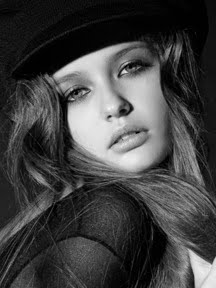
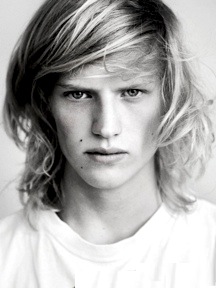.jpg)
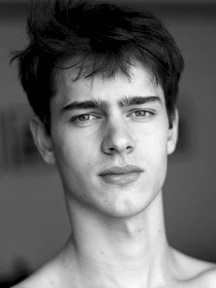
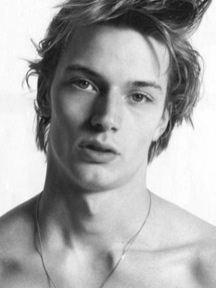.jpg)

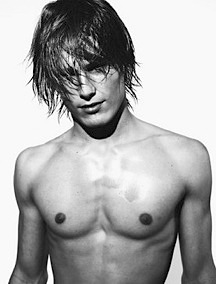
.jpg)




.jpg)
